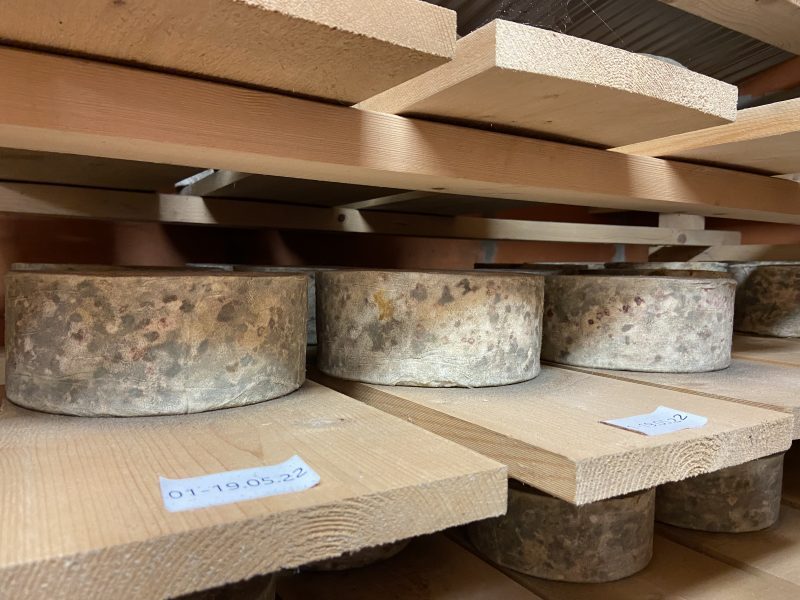This a monthly series which I have been publishing for quite some years. You can subscribe here, to get the latest cheese delivered directly on to your screen.
After the Munkeby in November, here is Norway again, but quite different from Cistercian brother Joël’s intensely aromatic, soft cheese. That referred to the traditions of the order in France, while Frode Hindrum and Liese Mathiesen take their inspiration from the „wide world“ and then adapt it to Norwegian conditions on Frode’s family’s old farm. The Cheddar cheeses of the English-speaking world have a particular appeal to them, and so the Kjerringklump was born.



It crumbles like a Westcombe, Keen or Montgomery from Somerset, but the cheddar-typical acidity seems more quiet and only present in the aftertaste, the fine earthy aromas, often reminiscent of fresh horseradish in England, are rounder here, more like really good root vegetables. What impressed me very much and surprised me during my visit: the Kjerringklump is bandaged in linen, which is top class even in Somerset.



As with Munkeby, it’s all about tradition and innovation – which belong together anyway, because otherwise the former would turn into a museum. And Frode Hindrum knows a thing or two about tradition: his family has been keeping dairy cows here on the farm on the Fosen peninsula north of Trondheim since at least 1520, but probably much longer. Frode’s grandfather still ran a Saeter, a summer cheese dairy in the so-called „Fosen Alps“ between Leksvika and Vanvikan, then at some point they switched to having the milk collected by the dairy all year round. Until Frode, a Norwegian, met Liese, a Dane who actually studied to be a filmmaker, and the two decided not only to take over the farm but also to switch to organic milk (2009) and to process part of it untreated, i.e. as raw milk, into cheese themselves. In 2012, Liese started experimenting, attending courses, and they went up to the grandfather’s old Saeter in the summer with two of their 34 cows. Then they set about planning. In 2014, the time had come: the small cheese dairy in the red-painted farm building was ready for take-off.
But why Cheddar, of all things, and Cheshire, and Monterey Jack as models? „Back then, everyone attended the same courses and there were only a few different cheeses,“ Liese told me, „and I just liked those cheeses.“ In the process known as „cheddaring“, the curd is left in the vat to acidify and et rid of some whey over many hours before being cut into small pieces, salted and finally pressed. The wheels are then rubbed with butter and bandaged with linen before being put under the press again. This creates a breathable surface where most of the mould grows on the cloth itself, but still has a significant and good influence on the ripening of the cheese.

And the name? Kjerringklumpen is Leksvik’s highest mountain at 601 metres, and it is said to have a fantastic view over the Trondheimsfjord to the south and the Kjølheia, Fagerheia and Kvernbølsheia moors to the south. Next time I am there, I will hopefully have time for a long hike. This time I was just happy to meet Frode and Liese and their new, old traditions in the form of cheese. A beautiful rainbow accompanied me on the ferry ride back to Trondheim, and the waffle with brunost for coffee was another reminder that cosmopolitan open-mindedness and regional roots are by no means mutually exclusive.


